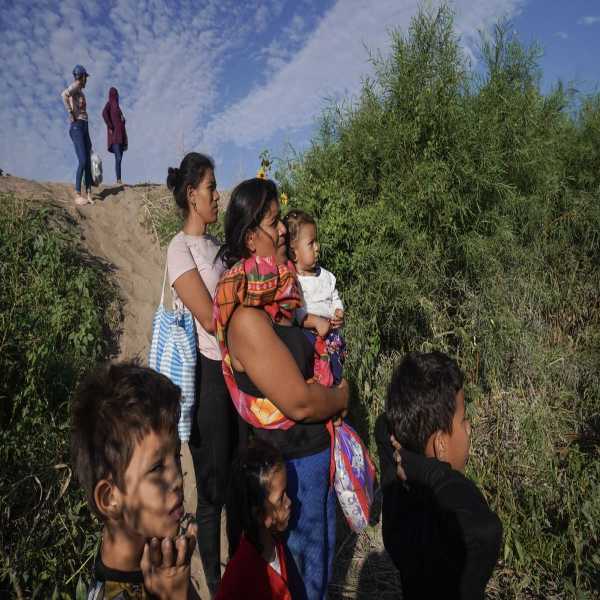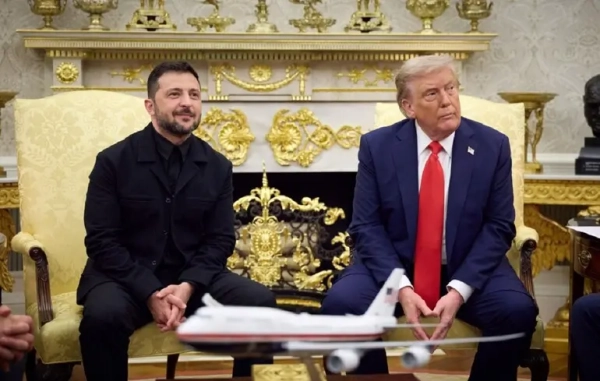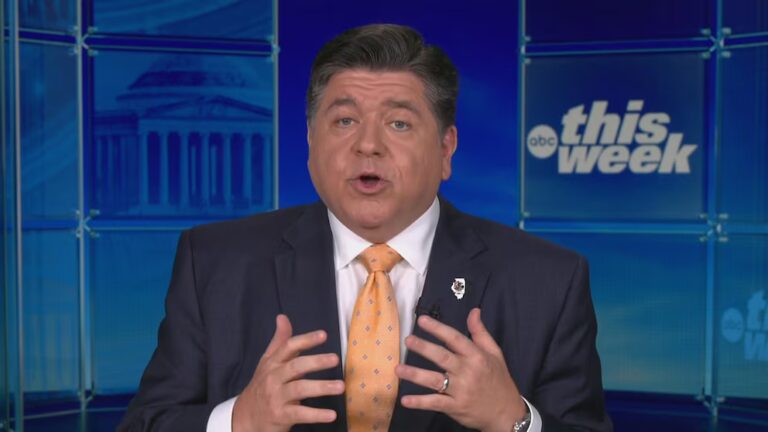Biden is skeptical that a border wall works. He’s still building a new one.

A group of Venezuelan migrants look for a path to cross the Rio Grande river along the border wall separating the US from Mexico on September 21, 2023 in Ciudad Juárez, Mexico. Michael Robinson Chávez/The Washington Post via Getty Images Nicole Narea covers politics and society for Vox. She first joined Vox in 2019, and her work has also appeared in Politico, Washington Monthly, and the New Republic.
The Biden administration has authorized the construction of a new section of border wall in Texas’s Rio Grande Valley. It’s a reversal of President Joe Biden’s campaign promise that “not another foot” of border wall would be constructed under his purview that comes as the president faces increasing pressure from Republicans — and members of his own party — to reduce rising border crossings.
Department of Homeland Security Secretary Alejandro Mayorkas said in a notice in the Federal Register that there is “presently an acute and immediate need” to build the new border wall to prevent unauthorized border crossings. He waived dozens of federal laws in approving the plans to construct the wall, including the National Environmental Policy Act, the Endangered Species Act, the Clean Water Act, and the Clean Air Act.
The Rio Grande Valley sector of the border alone has seen nearly 300,000 migrant encounters between October 2022 and August of this year, according to data from US Customs and Border Protection. Apprehensions of migrants are also high across the border, with those numbers reaching a peak for this year at more than 200,000 in September.
Biden argues that he had no choice in whether the border wall project moved forward. In the Oval Office Thursday, he noted that the money that will be used to construct the wall was appropriated in 2019 under the Trump administration and claimed that it must be used for that purpose.
“I tried to get them to reappropriate it, to redirect that money,” he said. “They didn’t. They wouldn’t.”
Still, it’s hard to see how the project isn’t politically expedient for him when he’s facing pressure from both parties to bring the number of border crossings down.
Republicans are reiterating calls for Mayorkas’s impeachment, claiming he’s been ineffective. Former President Donald Trump — the 2024 Republican frontrunner whose calls to “build the wall” across the entire southern border were a defining feature of his 2016 campaign — said he was awaiting an “apology” from Biden over his past criticisms of the border wall: “As I have stated often, over thousands of years, there are only two things that have consistently worked, wheels, and walls!” he wrote Thursday in a post on TruthSocial.
Democratic leaders across the US have also pressed the Biden administration for solutions.
Illinois Gov. J.B. Pritzker and Chicago Mayor Brandon Johnson recently demanded that the White House take immediate action to address migrant arrivals they say their cities are struggling to support. New York City Mayor Eric Adams even went to Mexico for a public information campaign warning migrants that his city does not have the resources to accommodate additional arrivals.
That’s not to say the administration’s decision lacks critics. Several Democratic lawmakers decried the plan, including Texas Rep. Henry Cuellar, who called it “wasteful,” and said, “A border wall is a 14th-century solution to a 21st-century problem. It will not bolster border security.”
And for immigrant advocates, moving ahead with the border wall project marks a failure of the Biden administration’s policies.
“The Biden administration is doubling down on the failed policies of the past that have proven wasteful and ineffective,” Jonathan Blazer, director of border strategies at the American Civil Liberties Union, said in a statement. “This politically motivated action will only harm border communities.”
Biden’s wall is a return to pre-Trump immigration policy
Trump set out to construct a wall across the entire southern border — an undertaking that many immigration experts denounced at the time as a drain on resources that would not be effective in achieving the former president’s stated aim of keeping migrants out. By the time he left office, only 52 miles of wall had been constructed where there had not been a barrier before. Migrant apprehensions nevertheless rose under Trump, falling during the pandemic only to jump back up again by the spring of 2021.
The Biden administration isn’t exactly setting out to finish the job that Trump started. When asked Thursday in the Oval Office whether he thought the existing border wall is effective, Biden himself said “no.” But this border wall project is much more limited and in line with what US immigration authorities have done for decades in being “careful in deciding where barriers would make sense,” said Doris Meissner, former commissioner of the then-Immigration and Naturalization Service. But she also said that such barriers can only “supplement or complement other enforcement measures.”
“They’re not a single solution,” she added.
Any serious efforts to reduce the number of migrants arriving on the southern border would have to also include cooperating with migrant-sending countries, as well as increasing resources for migrant processing that happens beyond the border, Meissner said.
Problematically for the Biden administration, one of the biggest sending countries right now is Venezuela, with which the US has no diplomatic relations, and which is essentially a failed state. According to figures obtained by CBS News, about 50,000 Venezuelans crossed the border in September — a record number reflective of the slow economic rebound from the pandemic in Latin American countries neighboring Venezuela where many migrants tried to settle.
The Biden administration has made Venezuelans eligible for Temporary Protected Status, which will allow them to temporarily live and work in the US. But that won’t mitigate the factors behind their decision to leave their home country or other Latin American countries where they may have tried to build a life for themselves.
Though diplomacy and executive action can alter the number of migrants arriving, there’s only so much the executive branch can do without new legislation, or even additional funding, from Congress. Neither appears to be forthcoming.
There was little chance of any legislation passing in the divided Congress even before the recent implosion of the House over spending bills. And moreover, House Republicans blocked the White House’s $4 billion supplemental funding request that would include support for border enforcement, migrant services, and the hiring of new immigration judges tasked with adjudicating asylum claims. Those judges are currently facing a backlog of more than 2 million cases across the US.
Sourse: vox.com






